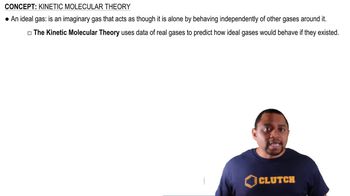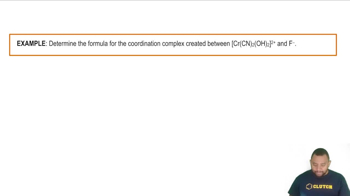Here are the essential concepts you must grasp in order to answer the question correctly.
Kinetic-Molecular Theory
The kinetic-molecular theory describes the behavior of gases in terms of particles in constant motion. It assumes that gas molecules are point particles with no volume and that they experience no intermolecular forces, allowing them to collide elastically. This theory helps explain gas properties such as pressure and temperature, but real gases can deviate from these ideal behaviors under certain conditions.
Recommended video:
Intermolecular Forces
Intermolecular forces are the attractive or repulsive forces between molecules that can affect their physical properties. These forces include van der Waals forces, dipole-dipole interactions, and hydrogen bonding. Gases that exhibit significant intermolecular forces may not behave ideally, leading to deviations from the predictions of the kinetic-molecular theory, especially at high pressures or low temperatures.
Recommended video:
Intermolecular vs Intramolecular Forces
Molecular Size and Complexity
The size and complexity of a molecule can influence its behavior as a gas. Larger and more complex molecules, such as SF6, tend to have stronger intermolecular forces due to their larger electron clouds and polarizability. In contrast, smaller and simpler molecules like Ne and N2 are more likely to behave ideally, as they have weaker intermolecular interactions, making them less likely to deviate from the assumptions of the kinetic-molecular theory.
Recommended video:
Coordination Complexes Example

 Verified step by step guidance
Verified step by step guidance


